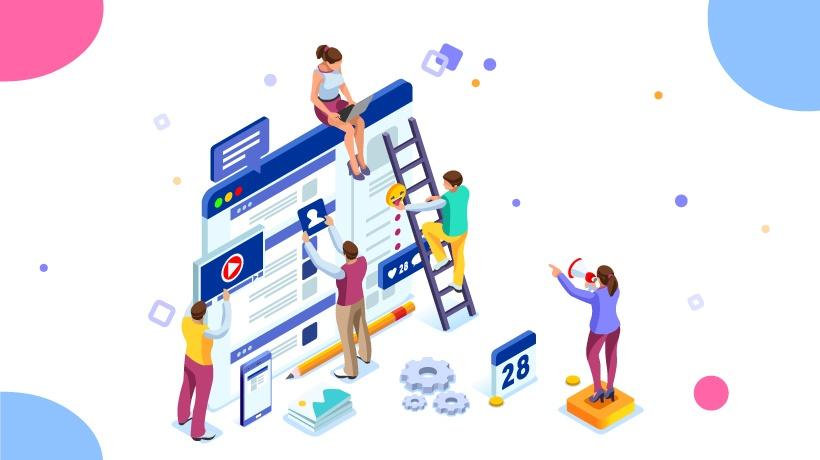In today’s rapidly evolving business landscape, organizations are increasingly recognizing that their most valuable asset is not just their products or technology, but their people. As companies strive to navigate complexities such as shifting market demands and a competitive workforce, the importance of talent growth becomes paramount. Business management services dedicated to talent development are at the forefront of this transformation, providing strategies and frameworks that empower individuals to realize their full potential. This article delves into the dynamic world of talent development within business management services, exploring innovative approaches, best practices, and the critical role these services play in fostering a culture of continuous learning and growth. Join us as we unveil the strategies that not only enhance employee performance but also drive organizational success in an age defined by change.
Harnessing Potential Through Tailored Training Programs
Investing in tailored training programs allows businesses to unlock the full potential of their workforce. A one-size-fits-all approach frequently enough leads to disengagement and missed opportunities for growth. By assessing individual skills, career aspirations, and organizational goals, companies can create customized learning experiences that resonate with their employees. These programs ensure that each team member is equipped with the specific tools and knowledge to excel in their roles, fostering a culture of continuous improvement and professional development. Key benefits include:
- Enhanced Skill Sets: Employees gain proficiency in areas that directly impact their performance.
- Increased Motivation: personalization boosts engagement and commitment among staff.
- better Retention Rates: employees are more likely to stay with a company that invests in their growth.
Moreover, organizations can implement metrics to evaluate the effectiveness of these tailored programs. By tracking progress and gathering feedback, companies can continually refine their training initiatives to align with changing business landscapes. Here’s a simple table illustrating potential success metrics for training impact:
| Metric | Measurement | Outcome |
|---|---|---|
| Employee Satisfaction | Post-training surveys | Increased morale and engagement |
| Skill Improvement | Pre- and post-assessments | Higher competency levels |
| Performance Metrics | Quarterly reviews | enhanced productivity |
Cultivating Leadership Skills for Sustainable Growth
In today’s fast-paced business habitat, the ability to nurture and refine leadership capabilities is crucial for driving enduring success. Companies must invest in comprehensive training programs focused on fostering essential leadership attributes, such as strategic thinking, emotional intelligence, and adaptability. By integrating interactive workshops, mentorship opportunities, and real-world problem-solving scenarios, organizations can create a fertile ground for cultivating leaders who are not only skilled but also adaptable to change. Key components of effective programs include:
- Assessments to identify individual strengths and areas for improvement
- Group activities that enhance collaboration and team spirit
- Access to seasoned leaders for guidance and insight
Moreover, leveraging technology can greatly enhance the learning experience. Virtual reality simulations and online modules allow emerging leaders to engage with complex situations in a risk-free environment, preparing them for real-world challenges. Emphasizing a culture of continuous learning and feedback encourages leaders to embrace growth and innovation. Organizations can benefit significantly from focusing on:
| Leadership Qualities | Importance |
|---|---|
| Visionary Thinking | Drives strategic direction and innovation |
| Effective Communication | Fosters collaboration and clarity |
| Resilience | Enables recovery from setbacks and adaptability |

Creating a Culture of Continuous Learning and Innovation
Fostering a successful environment for growth and creativity requires purposeful actions and frameworks that empower employees at every level. To achieve this, organizations should focus on:
- Encouraging Feedback: Establish channels for open communication, allowing employees to share their insights and learnings without hesitation.
- Providing Resources: Invest in access to educational materials and training programs that align with employees’ career aspirations and the company’s goals.
- Promoting Experimentation: Create a safe space for employees to explore new ideas, embracing failure as a part of the innovation process.
The integration of effective learning methodologies can significantly enhance team dynamics and business agility. An essential practice is to offer mentorship programs that connect seasoned professionals with emerging talent. Additionally, organizations can implement structured workshops, promoting collaborative brainstorming sessions where innovative ideas can flourish. Below is a simple framework for evaluating the effectiveness of these initiatives:
| Initiative | Objective | Desired Outcome |
|---|---|---|
| Mentorship Programs | Skill Development | Increased Employee Engagement |
| Workshops | Team Collaboration | enhanced Creativity |
| Feedback Channels | Open Communication | Continuous Improvement |

Measuring Impact and Success in Talent Development Initiatives
To effectively gauge the impact and success of talent development initiatives, organizations must employ a multi-faceted approach that encompasses both qualitative and quantitative metrics. This could involve setting clear objectives at the outset of a program and establishing key performance indicators (KPIs) aligned with those goals. Metrics could include:
- Employee Engagement scores: Survey results that reflect employee satisfaction and interest in development opportunities.
- skills Assessment: improvement in competency levels post-training.
- Retention Rates: Comparing turnover rates before and after initiatives.
Additionally, integrating feedback mechanisms can provide invaluable insights into the effectiveness of training programs. Regular check-ins and surveys can help capture real-time perceptions of the development efforts. Many organizations find that creatively presenting this data can not only simplify insights but also motivate further engagement. The following table illustrates how various metrics contribute to a holistic view of initiative success:
| Metric | Before Initiative | After Initiative |
|---|---|---|
| Employee Engagement Score | 65% | 80% |
| Skill Competency Level | 3.0/5 | 4.5/5 |
| retention Rate | 75% | 90% |
Final Thoughts
In a world where the competition is fierce and the landscape of business is ever-evolving, the significance of talent development within Business Management Services cannot be overstated. Developing a robust talent pool isn’t just a strategy—it’s a commitment to the future. By investing in the growth of your employees, organizations not only enhance their individual skills but also cultivate a culture of innovation and resilience.
as we wrap up our exploration of talent development, consider it not merely an operational function, but a strategic initiative that shapes the very fabric of an institution. Whether through personalized training programs, mentorship opportunities, or leadership development, empowering your workforce ensures that both the organization and its members thrive harmoniously.
The journey of talent development is ongoing, filled with challenges and triumphs alike. By embracing this journey, businesses can unlock the full potential of their teams, paving the way for sustainable success and positive impact in the marketplace. So, as you reflect on the insights shared, remember: the future belongs to those who invest in their greatest assets—the people within their organization. It’s time to nurture the talent that will drive your business forward.

